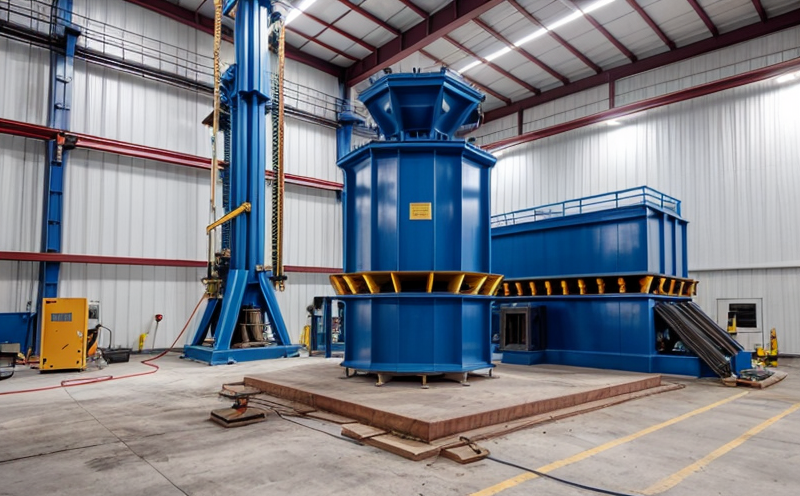ASTM E756 Damping Property Testing of Materials
The ASTM E756 standard is a critical tool in the evaluation of materials used across various sectors where damping properties are essential. These include automotive, aerospace, and electronics industries, among others. The test assesses how efficiently materials absorb mechanical energy without dissipating it as heat, which is crucial for optimizing product performance and durability.
Damping is a significant factor in reducing unwanted vibrations, noise, and resonance, thereby enhancing the overall quality of products such as engines, frames, and electronic components. By accurately measuring damping properties, manufacturers can ensure that their materials meet stringent industry standards and perform optimally under various conditions.
The ASTM E756 test involves subjecting a sample to oscillatory mechanical loading at different frequencies. The primary measurement is the loss factor (tan δ), which indicates the energy dissipation per cycle of vibration. This data helps engineers understand the material's ability to dampen vibrations and its potential impact on product performance.
Specimen preparation for ASTM E756 testing requires precise handling to avoid introducing errors that could compromise results. Samples must be cut from a representative area of the material, ensuring uniformity across all specimens. The choice of specimen dimensions can significantly influence the test outcome; therefore, it's essential to follow the guidelines provided in ASTM E756.
Instrumentation used in ASTM E756 testing includes dynamic materials testers equipped with frequency sweep capabilities and high-precision force transducers. These instruments provide accurate data on the relationship between applied stress and strain rate during oscillatory loading. The use of such advanced equipment ensures consistent and reliable results, which are vital for making informed decisions about material selection.
The ASTM E756 standard specifies acceptance criteria based on the loss factor (tan δ) values obtained from multiple frequency sweeps. Compliance with these criteria indicates that the tested materials possess adequate damping properties suitable for their intended applications. Adhering to these standards not only ensures product quality but also enhances safety and reliability across industries.
Understanding the testing process through real-world scenarios can provide deeper insights into why ASTM E756 is crucial. For instance, in automotive manufacturing, accurate damping property tests ensure that engine mounts do not amplify vibrations leading to premature wear or noise pollution. In electronics, proper damping helps prevent overheating and ensures signal integrity.
In summary, ASTM E756 Damping Property Testing of Materials plays a pivotal role in ensuring the quality and performance of materials used across various sectors. Its meticulous approach to measuring damping properties using standardized methods guarantees reliable data that supports informed decision-making for product design and development.
Scope and Methodology
The scope of ASTM E756 covers the determination of the loss factor (tan δ) of materials under cyclic loading conditions. This test is applicable to a wide range of solid materials, including metals, plastics, composites, ceramics, and rubber-based products.
According to ASTM E756, the methodology involves subjecting the specimen to controlled oscillatory mechanical loading at various frequencies within a specified range (typically between 1 Hz and 2000 Hz). The testing apparatus should be capable of maintaining consistent environmental conditions such as temperature and humidity to ensure accurate results.
The core steps in conducting ASTM E756 tests include:
- Preparation of specimens according to specified dimensions and orientations.
- Calibration of the testing equipment to ensure accuracy.
- Application of cyclic loading at different frequencies while monitoring displacement, velocity, and force.
- Calculation of the loss factor (tan δ) using the collected data points.
The results are presented in tabular form showing how the loss factor changes with frequency. Compliance with ASTM E756 ensures that materials meet industry standards regarding their damping capabilities, which is vital for product design and performance optimization.
Industry Applications
| Industry Sector | Potential Benefits of ASTM E756 Testing |
|---|---|
| Automotive | Reduces engine noise and vibration, improving passenger comfort. |
| Aerospace | Increases structural integrity by minimizing resonant frequencies that can lead to fatigue failure. |
| Electronics | Promotes signal clarity in sensitive components like speakers or microphones. |
| Construction | Enhances durability of building materials subjected to dynamic loading conditions. |
The ASTM E756 test finds extensive application across diverse industries due to its versatility and precision. In automotive applications, the test ensures that components like engine mounts effectively reduce noise and vibration. For aerospace manufacturers, it helps in selecting materials with optimal damping properties to withstand harsh environmental conditions without failure.
- In electronics manufacturing, this testing ensures that speakers or microphones operate efficiently by minimizing unwanted vibrations.
- For construction sectors, ASTM E756 aids in choosing building materials capable of maintaining structural integrity under varying loads and temperatures.
The consistent application of ASTM E756 across these industries contributes significantly to improving product quality and reliability. By adhering to this standard, manufacturers can ensure their products meet the highest levels of performance and safety requirements.
Why Choose This Test
- Precision Measurement: ASTM E756 provides highly accurate measurements of a material's damping properties under controlled conditions.
- Compliance Assurance: Ensures that materials comply with international standards, enhancing product quality and reliability.
- Industry-Wide Acceptance: Widely recognized by leading companies and regulatory bodies worldwide, ensuring consistent results across different markets.
- Potential Cost Savings: Identifying suboptimal damping early in the development process can save substantial costs on redesigns or replacements later.
- Informed Decision-Making: Provides engineers with crucial data needed for selecting appropriate materials based on specific performance requirements.
- Enhanced Product Performance: Optimizes product design by ensuring that materials perform as intended, leading to better overall customer satisfaction.
The ASTM E756 test is a cornerstone in the quality assurance process, offering unparalleled insights into material behavior under dynamic loading. Its rigorous testing procedures coupled with wide industry acceptance make it an indispensable tool for any organization seeking excellence in their product offerings.





